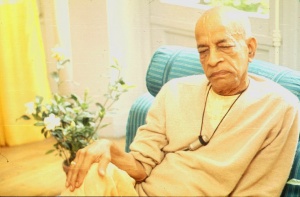CC Madhya 5.9

A.C. Bhaktivedanta Swami Prabhupada
TEXT 9
- sākṣi-gopālera kathā śuni, loka-mukhe
- sei kathā kahena, prabhu śune mahā-sukhe
SYNONYMS
sākṣi-gopālera — of the witness Gopāla; kathā — the narration; śuni — hearing; loka-mukhe — from the people; sei kathā — that narration; kahena — Nityānanda Prabhu narrates; prabhu — Lord Śrī Caitanya Mahāprabhu; śune — hears; mahā-sukhe — in great pleasure.
TRANSLATION
At that time, Nityānanda Prabhu had heard the story of Sākṣi-gopāla from the townspeople. He now recited this again, and Lord Caitanya Mahāprabhu heard the narration with great pleasure.
PURPORT
The Sākṣi-gopāla temple is situated between the Khurdā Road railway station and the Jagannātha Purī station. The Deity is not presently situated in Kaṭaka, but when Nityānanda Prabhu traveled there, the Deity was present. Kaṭaka is a town in Orissa situated on the Mahānadī River. When Sākṣi-gopāla was brought from Vidyānagara in southern India, He stayed for some time at Kaṭaka. Thereafter, He was situated for some time in the Jagannātha temple. It seems that in the temple of Jagannātha there was some disagreement between Jagannātha and Sākṣi-gopāla, a disagreement called prema-kalaha, a quarrel of love. In order to settle this love quarrel, the King of Orissa constructed a village about eleven miles from Jagannātha Purī. The village was called Satyavādī, and Gopāla was stationed there. Thereafter, a new temple was constructed. Now there is a Sākṣi-gopāla station, and people go to Satyavādī to see the witness Gopāla.